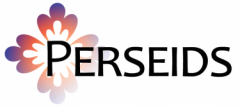Pelagios used in Tufts Classes
Pelagios, Pleiades, and Perseids workshop took place at week-long hackathon
On Monday, March 3, students in Marie-Claire Beaulieu’s Medieval Latin class and Maxim Romanov’s Geography of the Classical Islamic World held a workshop together with the Pelagios team. Leif Isaksen (University of Southampton), Elton Barker (Open University), and Rainer Simon (Austrian Institute of Technology) directed the students in using the Pelagios interface to annotate place names in Latin, English, and Arabic documents. We were fortunate to also have Tom Elliott (New York University Institute for Studies of the Ancient World), the co-managing editor of the Pleiades Gazetteer used by Pelagios, participating in the workshop.
These annotations document the location of toponyms mentioned in literary texts and situate them on a digital map. Some of the texts tackled by the students include Isidore of Seville’s Etymologiae, Pliny’s Naturalis Historia, and Al-Muqaddasi’s The best divisions for knowledge of the regions. The students created around 1500 annotations in 15 minutes!
The workshop was part of a larger week-long hackathon for the Perseids project, one outcome of which will be the integration of the Perseids collaborative editing and annotation platform with Pelagios’ Recogito interface, enabling students to use the Pelagios tool to annotate places in texts and have their annotations saved as part of a larger portfolio of their work on Perseids.





2 thoughts on “Pelagios used in Tufts Classes”
Comments are closed.